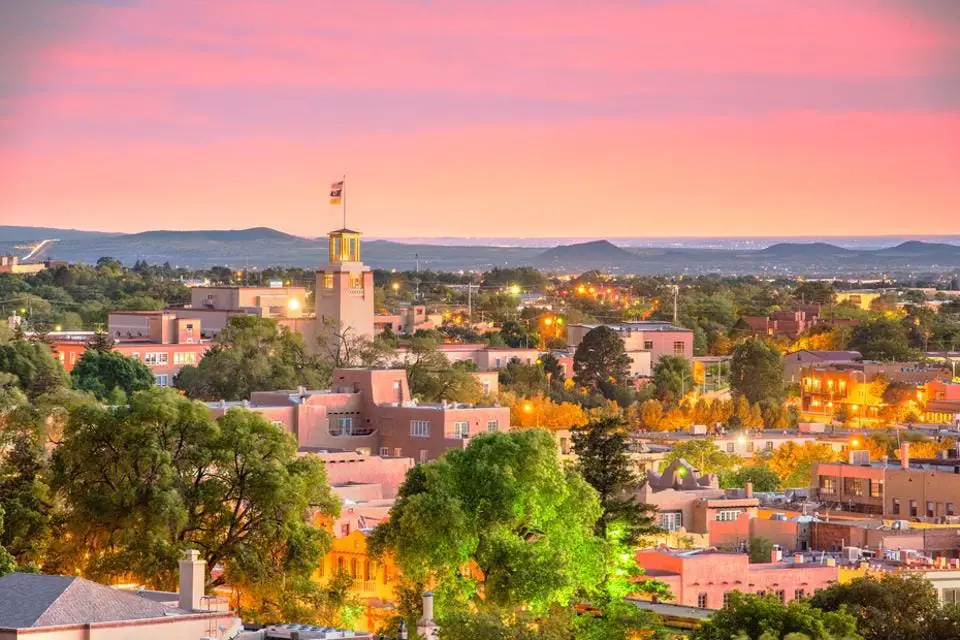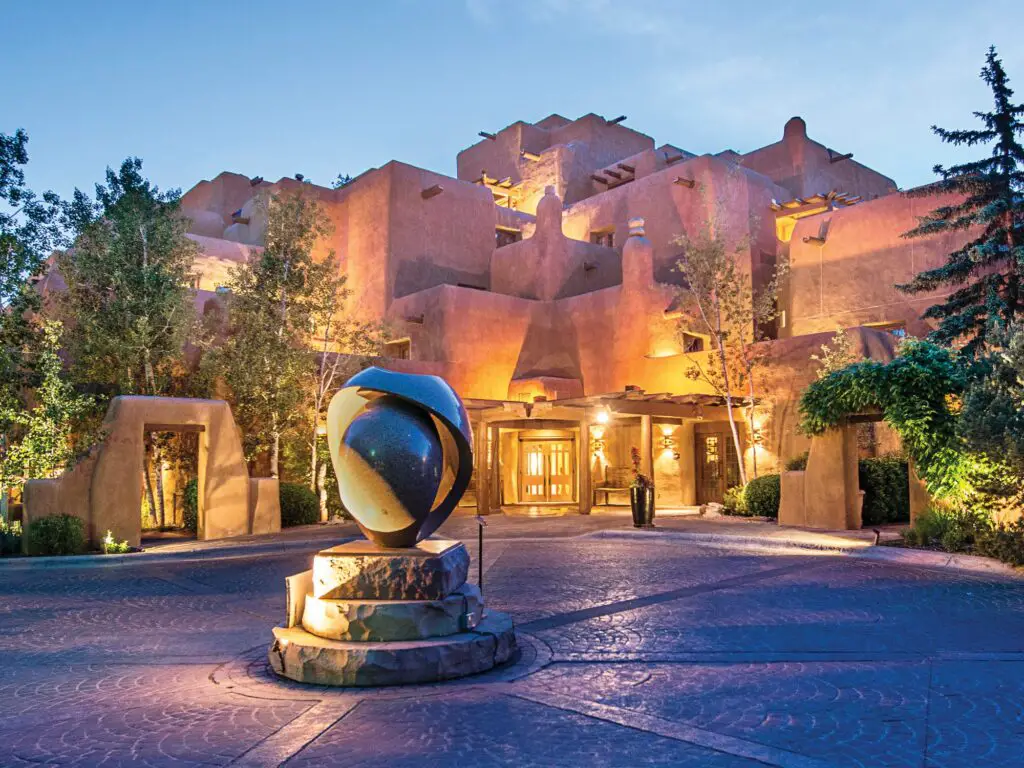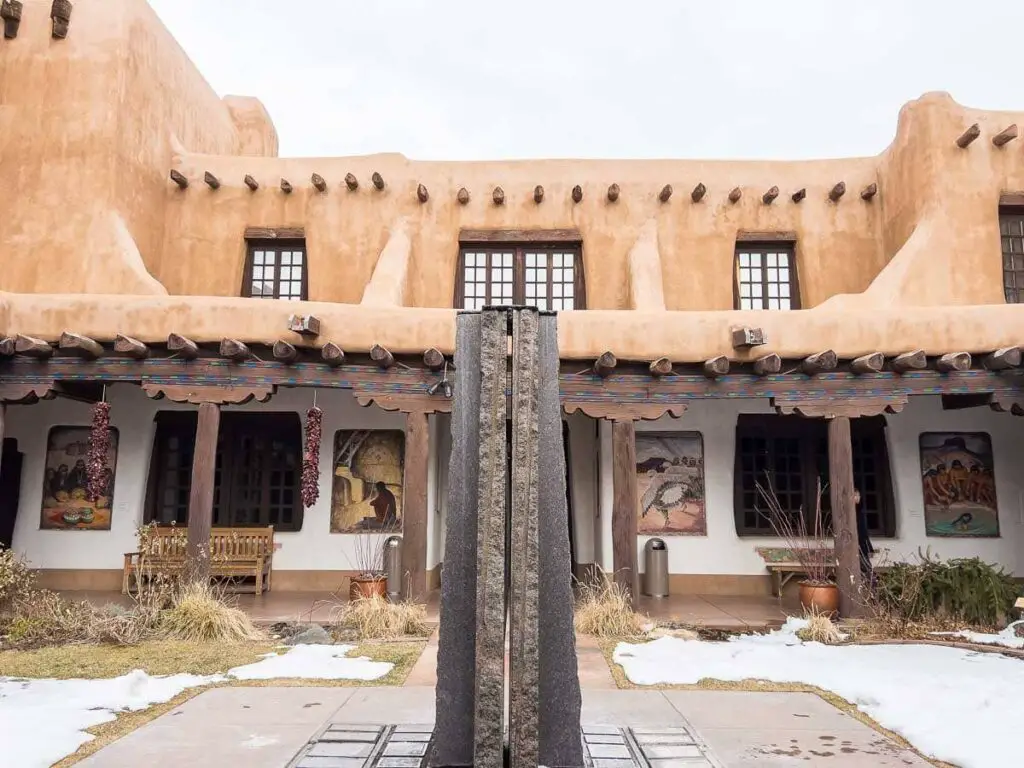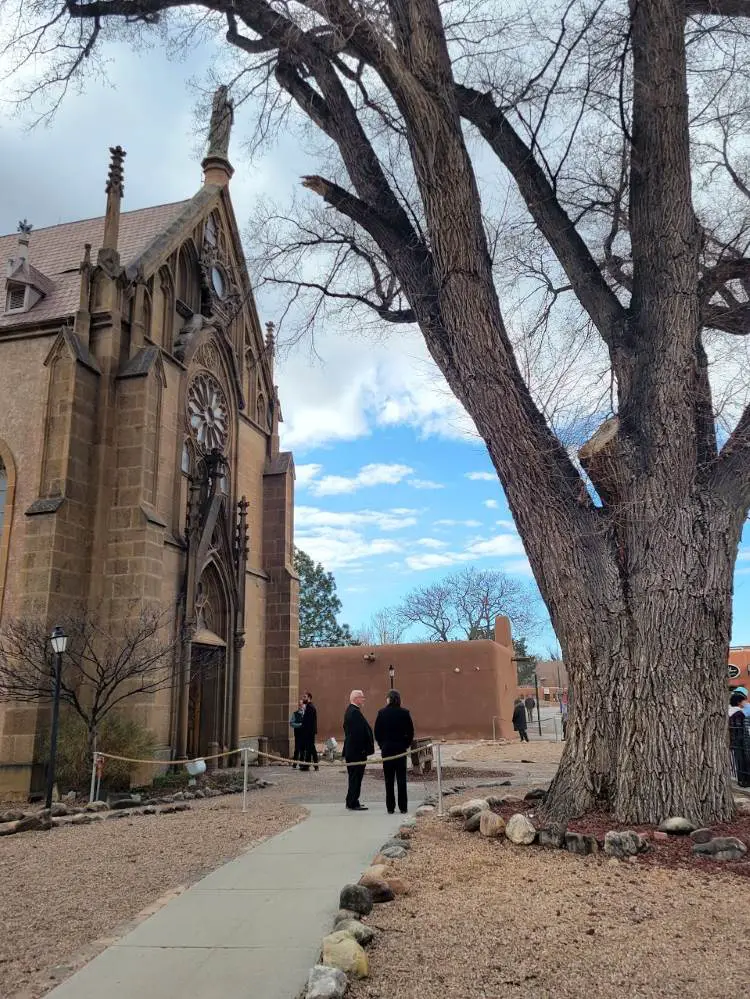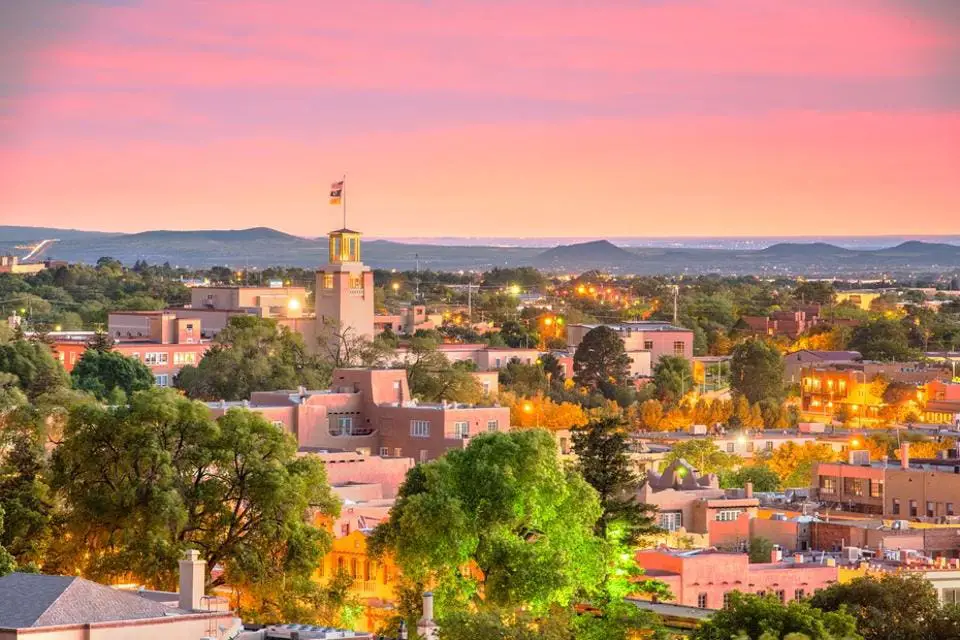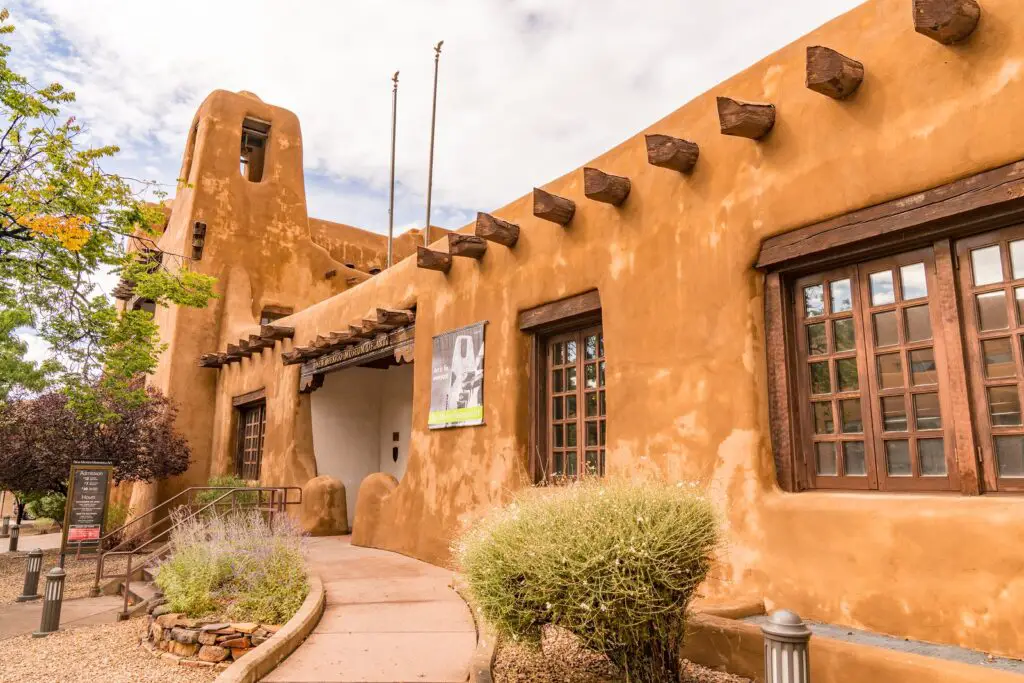Have you ever wondered what makes Santa Fe, New Mexico such a unique and vibrant city? Well, let me tell you, it’s all about its rich cultural heritage! When you walk the streets of Santa Fe, you can just feel the history and the artistic spirit that fills the air. From its adobe architecture to its vibrant art scene, this city has it all. In this article, we will delve deeper into the cultural heritage of Santa Fe and explore the fascinating traditions and influences that have shaped this incredible place. So, get ready to be amazed!
To truly understand the cultural heritage of Santa Fe, we have to go back in time and explore the city’s roots. Santa Fe was founded way back in 1610, making it the oldest capital city in North America. It has been inhabited by Native American tribes, Spanish colonizers, Mexican settlers, and Anglo-Americans, all of whom have left their mark on the city’s architecture, cuisine, and traditions.
The adobe architecture that Santa Fe is so famous for is a clear reflection of its history. The use of thick, natural clay walls and flat roofs has been passed down through generations and is a staple of Santa Fe’s unique aesthetic. As you stroll through the downtown area, you’ll see buildings with intricate wooden details and colorful accents, all adding to the charm and cultural richness of the city.
But it’s not just the architecture that tells the story of Santa Fe’s cultural heritage. The city is also known for its vibrant arts scene, with numerous galleries and museums showcasing the work of local artists. The Santa Fe Opera and the Santa Fe Indian Market are just a few examples of the many events and festivals that celebrate the artistic talents of the community.
So, if you’re looking to immerse yourself in a place that is bursting with culture and history, look no further than Santa Fe. In the next part of this article, we will explore even more aspects of this amazing city and discover what makes it a haven for art lovers, history enthusiasts, and curious travelers alike. Stay tuned!
Exploring the Rich Cultural Heritage of Santa Fe
As an avid traveler, I have always been fascinated by the rich cultural heritage of different cities around the world. One place that has captivated my heart is Santa Fe, the capital city of New Mexico in the United States. From its early Native American settlements to the vibrant modern art scene, Santa Fe is a treasure trove of history, art, architecture, and traditions. Join me on a journey as we explore the multifaceted cultural tapestry of this enchanting city.
Early Native American Settlements
Long before European colonization, the land that is now Santa Fe was inhabited by various Native American tribes, including the Pueblo people. These indigenous communities thrived on the arid plains, utilizing their deep connection with the land to build sustainable societies. The remnants of their ancient settlements can still be seen today, providing a glimpse into their remarkable engineering skills and artistic traditions.
Spanish Colonization
In the 16th century, Spanish explorers led by Francisco Vázquez de Coronado arrived in the region, marking the beginning of the Spanish colonization of Santa Fe. The Spanish built structures and introduced their architectural styles, which are still prevalent in the city today. The historic downtown area, with its narrow streets and adobe buildings, reflects the Spanish influence that shaped the city’s identity.
Mexican Influence
Following the Mexican War of Independence in the early 19th century, Santa Fe became a part of Mexico. During this period, Mexican culture and traditions further infused with the local Native American and Spanish influences. The vibrant colors, intricate patterns, and lively celebrations of Mexican culture can still be experienced in various aspects of Santa Fe’s cultural landscape.
American Expansion
In 1848, the United States acquired Santa Fe as part of the Treaty of Guadalupe Hidalgo, which ended the Mexican-American War. With the American expansion came new influences and a diverse influx of people from different backgrounds. This cultural amalgamation contributed to the evolving identity of Santa Fe, making it a melting pot of traditions, beliefs, and artistic expressions.
Artistic Traditions in Santa Fe
Santa Fe has long been a haven for artists, attracting creative minds from all over the world. The city’s artistic traditions are deeply rooted in its cultural heritage, forming a tapestry of diverse art forms and movements.
Pueblo Pottery
One of the most revered art forms in Santa Fe is Pueblo pottery. The Pueblo people have been crafting exquisite pottery for centuries, using traditional techniques passed down through generations. The intricate designs and vibrant colors of their pottery represent their connection to the land, spirituality, and ancestral customs.
Western and Native American Art
The rugged landscapes and rich cultural heritage of Santa Fe have inspired countless Western and Native American artists. Their artwork, ranging from paintings and sculptures to jewelry and textiles, showcases the beauty of the region and its indigenous cultures. The galleries and museums in Santa Fe proudly exhibit these masterpieces, offering visitors a chance to immerse themselves in the artistic legacy of the city.
Traditional Spanish Colonial Art
The Spanish colonial era left a lasting impact on Santa Fe’s art scene. The traditional Spanish colonial art, reminiscent of the Baroque and Rococo styles, can be seen in the city’s churches, cathedrals, and museums. Elaborate woodcarvings, religious icons, and ornate altarpieces reflect the influence of Spanish religious traditions and artistic craftsmanship.
Modern Art Movements
In addition to its traditional artistic roots, Santa Fe has also embraced modern art movements. The city boasts a vibrant contemporary art scene, with numerous galleries showcasing works by local and international artists. From abstract paintings to avant-garde sculptures, Santa Fe’s modern art scene continues to evolve and push the boundaries of creativity.
Architecture in Santa Fe
The architecture of Santa Fe is a testament to the city’s rich cultural history. From Native American adobe structures to Spanish colonial-style buildings, each architectural style tells a story of the city’s past.
Native American Adobe Structures
The adobe structures, made of sun-dried clay bricks, are a hallmark of Native American architecture in Santa Fe. These mud-brick buildings blend harmoniously with the surrounding landscape and showcase the practicality and sustainability of indigenous design.
Spanish Colonial Style
The Spanish colonial influence is evident in the city’s architecture, particularly in the historic downtown area. The adobe buildings with their flat roofs, earthy tones, and thick walls provide insulation against the desert heat. The use of arches, wrought iron, and wooden details further exemplify the Spanish colonial aesthetics.
Pueblo Revival Architecture
In the early 20th century, Santa Fe embraced the Pueblo Revival architectural style. Inspired by the traditional adobe structures of the Native Pueblo people, this architectural style became a defining feature of the city’s identity. Pueblo Revival buildings often have rounded edges, earth-toned stucco exteriors, and decorative elements such as vigas (exposed ceiling beams) and kiva fireplaces.
Contemporary Architectural Influences
While preserving its historic architecture, Santa Fe has also welcomed contemporary architectural influences. The city boasts modern buildings that seamlessly blend with its cultural heritage. These architectural marvels demonstrate the evolution of Santa Fe’s urban landscape, showcasing the city’s commitment to embracing the future while honoring its past.
Religious Heritage in Santa Fe
Religion has played a significant role in shaping the cultural heritage of Santa Fe. Throughout the city, you can find numerous churches, missions, and spiritual landmarks that celebrate the diversity of religious traditions.
Catholicism in Santa Fe
Catholicism arrived in Santa Fe with the Spanish colonizers and has remained an integral part of the city’s religious fabric. The San Miguel Mission, built in the early 17th century, is the oldest church in the United States and a testament to Santa Fe’s deep Catholic roots. Its adobe walls and historic artifacts provide a glimpse into the city’s religious heritage.
San Miguel Mission
The San Miguel Mission, also known as the Church of San Miguel, holds immense historical and religious significance. This iconic adobe church has withstood the test of time, surviving numerous renovations and reconstructions. It stands as a living testament to the resilient spirit of the Santa Fe community and its enduring connection to the divine.
Santuario de Guadalupe
Another religious landmark in Santa Fe is the Santuario de Guadalupe. Located near the historic downtown area, this Spanish colonial-style chapel is dedicated to Our Lady of Guadalupe, the patron saint of Mexico. The chapel’s ornate altar, vibrant artwork, and serene atmosphere make it a popular destination for spiritual reflection and cultural appreciation.
Syncretism and Native Spirituality
Santa Fe’s religious heritage is not limited to Catholicism; the city also embraces the syncretism of Native American and Spanish spiritual traditions. Native American communities continue to practice their indigenous beliefs and rituals, which have interwoven with Catholicism over the centuries. The preservation of native spirituality in Santa Fe showcases the city’s commitment to honoring diverse cultural traditions.
Culinary Delights of Santa Fe
No exploration of Santa Fe’s cultural heritage is complete without indulging in its culinary delights. The city’s cuisine is a fusion of Native American, Mexican, and Spanish flavors, creating a unique and vibrant culinary experience.
Traditional New Mexican Cuisine
New Mexican cuisine is known for its bold flavors, vibrant colors, and use of native ingredients. The staple dish, green or red chile, is a testament to the region’s love for spicy and flavorful foods. Other traditional dishes include enchiladas, tamales, and posole, each infused with the rich cultural heritage of Santa Fe.
Chile and Its Significance
Chile is at the heart of Santa Fe’s culinary heritage. The cultivation of chile peppers has deep historical roots in the region, dating back to Native American agricultural practices. The fiery yet nuanced flavors of green and red chile contribute to the distinctiveness of Santa Fe’s cuisine, making it a destination for food lovers seeking an authentic culinary experience.
Influence of Native Ingredients
Santa Fe’s culinary traditions are deeply connected to the land and its indigenous ingredients. Native crops such as corn, beans, squash, and various types of peppers are vital components of traditional dishes. The use of these ingredients showcases the sustainable farming practices and respect for nature inherent in Native American and Spanish colonial cultures.
Santa Fe’s Signature Dishes
Santa Fe has its own signature dishes that reflect the city’s cultural heritage. One such dish is the biscochito, a traditional New Mexican cookie with flavors of anise and cinnamon. Another local favorite is the sopapilla, a fried pastry often served with honey or as a savory accompaniment to flavorful stews. Exploring the culinary delights of Santa Fe is a delightful journey into the region’s cultural past and present.
Festivals and Celebrations
Santa Fe’s rich cultural heritage is celebrated through numerous festivals and events that showcase the city’s artistic, religious, and culinary traditions.
Santa Fe Indian Market
The Santa Fe Indian Market is one of the largest and most prestigious Native American art markets in the world. Every year, artists from various tribes and nations converge in Santa Fe to showcase and sell their exquisite artwork, including jewelry, pottery, textiles, and paintings. The market is a celebration of Native American culture and a testament to Santa Fe’s commitment to preserving and promoting indigenous art forms.
Fiesta de Santa Fe
Fiesta de Santa Fe is a annual celebration that commemorates the Spanish reconquest of the city in 1692. This colorful event features parades, live music, traditional dances, and religious processions. It is a time for the Santa Fe community to gather and celebrate its cultural heritage, reinforcing the city’s identity as a vibrant multicultural destination.
Canyon Road Farolito Walk
During the holiday season, Santa Fe’s Canyon Road transforms into a magical wonderland adorned with farolitos, small paper lanterns. The Farolito Walk is a beloved tradition where locals and visitors stroll down the road, taking in the festive ambiance, and visiting the art galleries and shops along the way. This enchanting event showcases the city’s artistic spirit and adds to the charm of Santa Fe’s cultural heritage.
International Folk Art Market
The International Folk Art Market is an annual event that brings together artisans from around the world. This multicultural extravaganza includes artists from diverse backgrounds showcasing their traditional crafts, textiles, and artwork. The market celebrates the global heritage of art and craftsmanship, offering visitors a unique opportunity to appreciate the cultural diversity not only of Santa Fe but of the wider world.
Literary and Intellectual Contributions
Santa Fe’s cultural heritage extends beyond its visual arts and traditions – the city has also been a hub of literary and intellectual contributions.
Santa Fe’s Writers and Poets
Throughout its history, Santa Fe has attracted writers and poets who seek inspiration from its breathtaking landscapes and rich cultural milieu. From renowned literary figures like D.H. Lawrence and Witter Bynner to contemporary writers, Santa Fe has fostered a community of wordsmiths that contribute to the literary heritage of the city.
The Santa Fe Opera
The Santa Fe Opera is a world-renowned opera house that showcases both classic and contemporary works. Nestled in the stunning Sangre de Cristo Mountains, this open-air opera venue offers a unique and unforgettable experience for music lovers. The opera contributes to Santa Fe’s cultural heritage by bringing together world-class performers, composers, and directors to create breathtaking productions.
National Museum of History
The National Museum of History in Santa Fe is a treasure trove of artifacts, documents, and exhibits that highlight the city’s historical and cultural significance. Through interactive displays and educational programs, the museum offers a comprehensive overview of Santa Fe’s past, present, and future. It serves as a testament to the city’s commitment to preserving and promoting its cultural heritage.
Santa Fe Institute
The Santa Fe Institute is a world-renowned interdisciplinary research center that explores complex systems and scientific inquiry. Through collaboration between scientists, scholars, and artists, the institute fosters intellectual growth and innovation. Its contributions to research and knowledge have added to Santa Fe’s reputation as a hub of creativity and intellectual curiosity.
Exploring Indigenous Cultures
To truly appreciate the cultural heritage of Santa Fe, one must explore the indigenous cultures that have shaped the region for centuries.
Native Pueblos of Santa Fe
The Native Pueblos surrounding Santa Fe are living testaments to the resilience and vibrancy of indigenous cultures. These ancient communities continue to preserve their traditions, language, and sacred ceremonies. Visitors can experience the rich cultural heritage of the Pueblo people through guided tours, traditional dances, and visits to cultural centers and museums.
Traditional Dances and Music
Native American dances and music are integral parts of Santa Fe’s cultural landscape. These vibrant and sacred performances tell the stories of the land, the people, and their spiritual beliefs. From the traditional dances of the Pueblo tribes to the rhythmic beats of drum circles, visitors can immerse themselves in the beauty and power of indigenous cultural expressions.
Cultural Centers and Museums
In Santa Fe and its surrounding areas, there are several cultural centers and museums dedicated to preserving and promoting indigenous cultures. These institutions offer visitors an opportunity to learn about the history, traditions, and contemporary issues faced by Native American communities. The exhibits, workshops, and educational programs highlight the diverse cultural heritage and the ongoing contributions of the indigenous peoples to Santa Fe’s identity.
Preservation of Native Languages
Language plays a critical role in preserving cultural heritage, and Santa Fe recognizes the importance of preserving Native languages. Efforts are underway to revitalize and promote indigenous languages, ensuring the survival of these invaluable cultural treasures. Visitors to Santa Fe can witness the beauty of Indigenous languages through public events, language immersion programs, and interactions with language preservation advocates.
Outdoor Adventures in Santa Fe
Beyond its cultural heritage, Santa Fe offers a plethora of outdoor adventures for nature enthusiasts and thrill-seekers.
Skiing and Snowboarding in Santa Fe Mountains
Santa Fe is a paradise for winter sports enthusiasts. Just a short drive from the city, the Santa Fe Ski Basin offers world-class skiing and snowboarding opportunities. Nestled in the majestic Sangre de Cristo Mountains, the ski resort boasts stunning views, well-groomed slopes, and a variety of terrain for all skill levels.
Hiking and Biking Trails
For those who prefer to explore on foot or by bike, Santa Fe offers an extensive network of hiking and biking trails. From easy strolls to challenging hikes, there are options for every level of outdoor enthusiast. The trails wind through picturesque landscapes, allowing visitors to connect with nature and soak in the beauty of Santa Fe’s natural surroundings.
Hot Springs and Natural Pools
Santa Fe is home to several natural hot springs and geothermal pools, providing a soothing and rejuvenating experience for visitors. Soaking in these mineral-rich waters is not only relaxing but also offers health benefits. Whether it’s a dip in the indoor spas or a visit to the outdoor springs, Santa Fe’s natural pools are the perfect way to unwind after a day of exploration.
Golf Courses and Outdoor Sports
For golf enthusiasts, Santa Fe offers a range of golf courses with breathtaking views and challenging fairways. These courses cater to all skill levels and provide a unique experience against the backdrop of Santa Fe’s stunning landscapes. Additionally, the city offers opportunities for outdoor sports such as tennis, horseback riding, and rock climbing, ensuring there is something for everyone to enjoy.
Santa Fe’s Local Markets
Exploring the local markets is a delightful way to experience Santa Fe’s vibrant community, support local artisans, and discover unique treasures.
Farmers Market
The Santa Fe Farmers Market is a must-visit for food lovers and enthusiasts of locally sourced produce. Here, you can find a bountiful array of fresh fruits, vegetables, meats, artisanal cheeses, and handmade crafts. The market is a vibrant hub of activity, where visitors can connect with local farmers, artisans, and fellow food enthusiasts.
Santa Fe Flea Market
For those seeking one-of-a-kind finds and vintage treasures, the Santa Fe Flea Market is the place to be. This sprawling market offers a wide variety of antiques, collectibles, jewelry, arts, and crafts. Browsing through the stalls, you never know what hidden gem you might uncover.
Santa Fe Plaza
The historic Santa Fe Plaza has been a cultural and commercial hub for centuries. Surrounded by charming adobe buildings, the plaza is a gathering place for locals and visitors alike. Here, you can browse through shops selling Native American jewelry, pottery, textiles, and other handmade crafts. The plaza is also a venue for live performances, festivals, and cultural celebrations, further showcasing Santa Fe’s vibrant cultural heritage.
Eldorado Arts and Crafts Market
The Eldorado Arts and Crafts Market showcases the talents of local artists and craftsmen. Visitors can explore a wide range of handmade jewelry, ceramics, paintings, textiles, and other unique creations. This market provides not only an opportunity to appreciate and purchase local artwork but also to engage with the artists themselves, making it a truly immersive experience.
Museums and Galleries in Santa Fe
Santa Fe is home to a vibrant art scene, with numerous museums and galleries showcasing a variety of artistic styles and mediums.
Georgia O’Keeffe Museum
The Georgia O’Keeffe Museum is dedicated to the life and work of the iconic American artist. The museum exhibits a comprehensive collection of O’Keeffe’s paintings, drawings, and sculptures. It provides insights into her artistic process, inspirations, and the profound impact she had on the art world. Visiting the museum is a unique opportunity to appreciate the legacy of one of America’s most celebrated artists.
Museum of International Folk Art
The Museum of International Folk Art celebrates the diverse cultural traditions of people around the world. Its extensive collections include folk art from various regions, showcasing the creativity, craftsmanship, and cultural significance of these art forms. The museum’s exhibits offer a window into the interconnectedness of global cultures and provide visitors with a deeper understanding and appreciation of the world’s rich cultural heritage.
New Mexico Museum of Art
The New Mexico Museum of Art is the oldest art museum in the state and features a wide range of visual arts. From traditional Pueblo pottery to contemporary installations, the museum’s collection spans different artistic periods and styles. Visitors can explore the rich history and artistic contributions of New Mexico, as well as temporary exhibits that highlight contemporary artwork and emerging talents.
Santa Fe Gallery Scene
Beyond the major museums, Santa Fe is renowned for its thriving gallery scene. The city is home to numerous art galleries, showcasing local, national, and international artwork. Strolling through these galleries offers the opportunity to appreciate a diverse array of artistic styles, techniques, and mediums. From traditional to contemporary, the Santa Fe gallery scene is a testament to the city’s continued commitment to the arts.
Outdoor Sculpture and Landmarks
Santa Fe’s outdoor sculptures and landmarks add a touch of artistic beauty to the city’s urban and natural landscapes.
The Plaza
The Santa Fe Plaza, located in the heart of the city, is a designated National Historic Landmark. One of the oldest public spaces in the United States, it is surrounded by historic buildings, adobe architecture, and galleries. The plaza is often adorned with sculptures, making it a picturesque destination where visitors can sit, relax, and take in the vibrant atmosphere.
Cathedral Basilica of St. Francis of Assisi
The Cathedral Basilica of St. Francis of Assisi is a prominent landmark in downtown Santa Fe. Its stunning Romanesque Revival architecture, intricate stained glass windows, and ornate altar make it a must-visit for lovers of religious art and architecture. The cathedral’s iconic bell towers and carved wooden doors are breathtaking examples of the city’s architectural heritage.
Canyon Road’s Sculpture Walk
Canyon Road is not only famous for its art galleries but also for its outdoor sculpture walk. As you meander along this historic street, you will encounter sculptures of various sizes, styles, and materials. The sculpture walk adds an element of surprise and wonder to the already captivating art scene of Santa Fe.
Kasha-Katuwe Tent Rocks National Monument
Located just outside Santa Fe, Kasha-Katuwe Tent Rocks National Monument is a geological marvel. The unique rock formations, created by volcanic eruptions and erosion, resemble towering tents. Exploring the monument’s hiking trails offers an opportunity to witness the stunning natural beauty of Santa Fe’s surroundings and immerse oneself in the awe-inspiring wonders of nature.
Shopping and Unique Boutiques
Santa Fe’s shopping scene is as diverse as its cultural heritage. From eclectic boutiques to Native American craft shops, there is something for every taste and interest.
Santa Fe Railyard
The Santa Fe Railyard is a vibrant shopping district filled with contemporary art galleries, boutique shops, and restaurants. Here, you can find a wide range of products, from handmade crafts and clothing to contemporary artwork and gourmet food products. The Railyard’s unique blend of history, art, and commerce reflects the essence of Santa Fe’s cultural heritage.
Santa Fe Southside
Away from the touristy areas, the Santa Fe Southside offers a more local and authentic shopping experience. This neighborhood is home to a variety of shops, including Native American jewelry stores, antique shops, and local artisans’ studios. Exploring the Southside is an opportunity to connect with the local community, discover hidden gems, and support local businesses.
Native American Jewelry and Crafts
Santa Fe is renowned for its Native American jewelry and crafts. The city is home to numerous shops and galleries where visitors can admire and purchase exquisite silver and turquoise jewelry, intricate pottery, colorful textiles, and other traditional Native American crafts. These authentic and handmade pieces serve as a tangible connection to the rich cultural heritage of the region.
Artisanal Products and Souvenirs
Santa Fe’s cultural heritage is reflected in the artisanal products and souvenirs available throughout the city. From unique ceramics and hand-blown glass to handcrafted leather goods and traditional textiles, there is a wide array of keepsakes and mementos to choose from. These artisanal products serve as reminders of the rich cultural experience one has had in Santa Fe.
Conclusion
Santa Fe’s cultural heritage is a tapestry woven from the threads of Native American, Spanish, Mexican, and American influences. The city’s historic sites, art galleries, museums, and culinary offerings provide a rich and fascinating exploration of its cultural past and present.
Preserving and celebrating this cultural heritage is of utmost importance to Santa Fe’s community. The city’s commitment to preserving its architectural treasures, revitalizing indigenous languages, supporting local artists, and promoting diverse cultural traditions ensures that Santa Fe’s cultural legacy will continue to thrive for generations to come.
Through my journey of exploring the rich cultural heritage of Santa Fe, I have discovered a city that embraces its past while embracing the future. Its multifaceted artistic traditions, architectural wonders, vibrant festivals, and culinary delights make it a destination for those seeking an immersive cultural experience.
Santa Fe’s contributions to art, history, and culture are ongoing, evolving, and inspiring. It is a place where diversity is celebrated, traditions are honored, and creativity flourishes. Exploring Santa Fe’s rich cultural heritage is like walking through history, art, and the tapestry of human experience, and it is a journey that will leave an indelible mark on the soul of any traveler.
